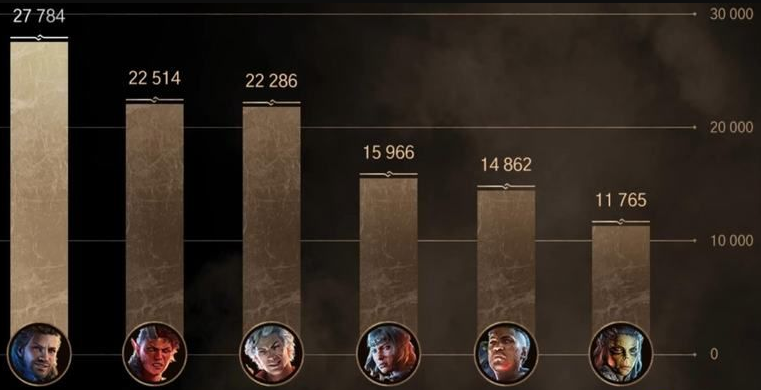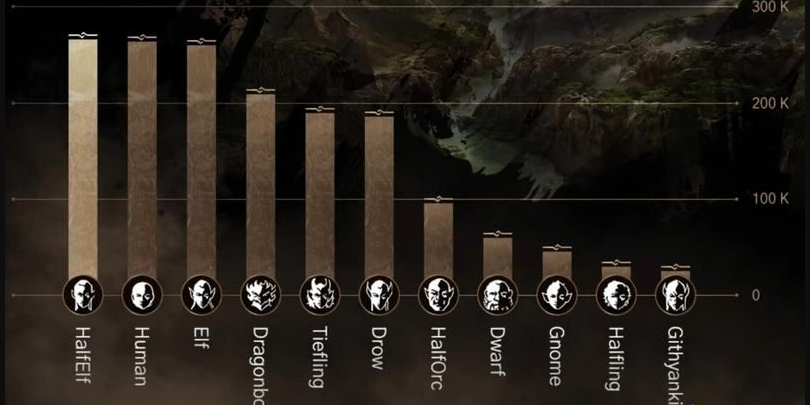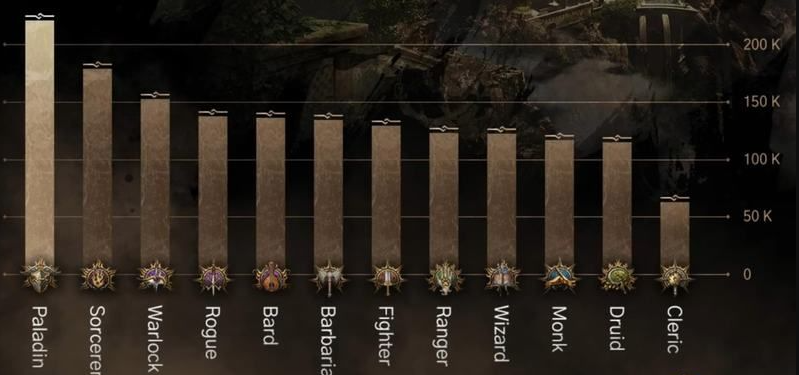Each profession in the game can be upgraded to level 12. For reference, at level 12, the magic system can cast 6th-level spells.
DLC will gradually push up the game level cap.
When you level up, you gain life (which varies according to your occupation, physique, race, and expertise), occupational abilities, actions, and occupational spells.
Level 12 is already very powerful in the DND setting, and as far as the game itself is concerned, it already has a lot of playability.
You can even click the Add Career button in the upper right corner of the upgrade interface to choose a part-time job.
Part-time work can complement the strengths of various professions, but it often cannot bring out the advanced characteristics of a certain profession. Fortunately, within the level 12 range, part-time work has relatively less impact.
Generally speaking, priests, mages, warlocks and other magic professions try not to have multiple jobs, so that they can obtain high-level spells.
Of course, if they are all spellcasters of the same type, they can work part-time, and they can also increase the spellcaster level to obtain high-level spells, but it is generally not very meaningful.
Usually, if you want to take part-time jobs, you should choose a part-time job that can provide better benefits at a lower level, such as a part-time rogue getting sneak attacks, a part-time barbarian getting rage, a part-time paladin getting holy healing and holy slash, a part-time warlock getting contract magic, etc.
Each profession will have a secondary job option at the beginning or level 3, which is equivalent to the direction of specialization.
Although the names are different, for example, the priest is called the domain, but the meaning is the same, which is to let you choose a direction to focus your efforts.
Melee professions such as warriors will also have the choice of combat style, which is also a kind of enhanced combat method.
You can make detailed choices on the upgrade interface. Click on the left sidebar to switch between options and consider them over and over again.
The right sidebar of the profession will also have tips on important abilities (such as the expertise you have chosen) for your reference.
In addition, all classes gain feats at 4th, 8th, 12th level (and so on).
Expertise is an additional powerful passive ability that is very helpful in enhancing BD gameplay. There will be more detailed explanations later.
Overall recommendation
In this section, the author will combine Larian’s recent interesting statistics to make an overall racial and professional recommendation.
This table does not completely represent the strength, but is a comprehensive reflection of the player’s personal feelings and aesthetics.
For example, in terms of the ranking of preset characters, players have relatively clear preferences: Gail → Kalak → Asdair → Shadowheart → Will → Laizer.
In fact, these professions all have good and powerful BDs, and this ranking is largely determined by appearance and personal preference.

In terms of race, the most popular choices are half-elves and humans.
Elves, Dragonborn, Tieflings, and Drow with strong spell abilities are also really useful.
Although the orcs’ appearance is not pleasing, their powerful physical attacks give them a place
Dwarves, gnomes and halflings are three short-legged people who are indeed not very popular.
As for the Githyanki, they are indeed restricted by their appearance.

In terms of profession, the strength of the Paladin is there, and it is easy to play it in any way.
The two turrets, the Warlock and the Warlock, although their current magic strength is average, can be well matched with the Paladin in multi-purpose roles, so their statistics are also quite high.
Almost most teams will bring a Rogue due to its functionality such as pathfinding and unlocking, while the Bard is a professional, weakened, auxiliary and enhanced version of the Rogue, and there is even a powerful Bard leading the team.
Barbarians and warriors benefit from their powerful melee bd and are also a common choice for the team.
The ranger can be far or near, and has exploration capabilities such as survival, which is more fun.
The mage is a jack of all trades, very interesting and functional, and warlocks, sorcerers, etc. can work part-time as mages to gain the ability to copy books.
The monk has a strong bd, but the bare-handed fighting style and image have never been popular. The druid has a similar problem. It is still strong but not many people like it.
The reason why the priest is at the bottom is basically a strength issue.
